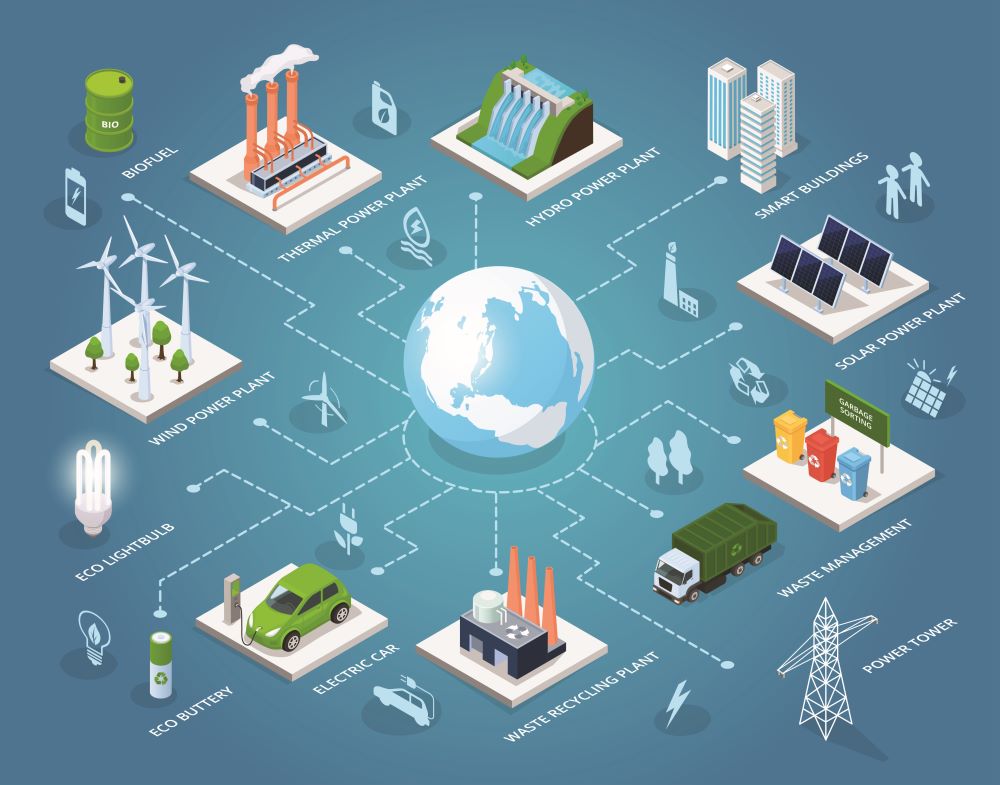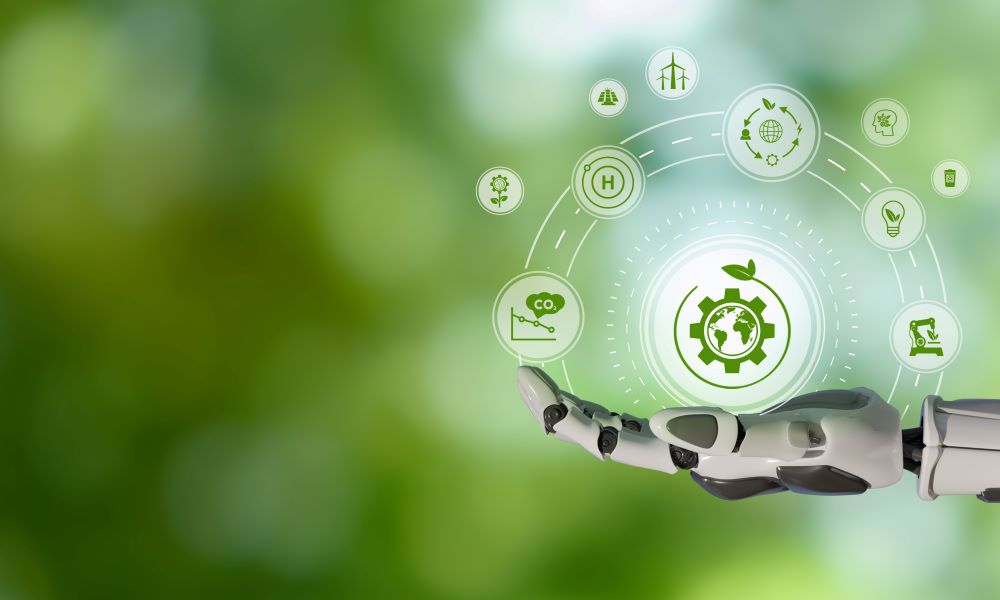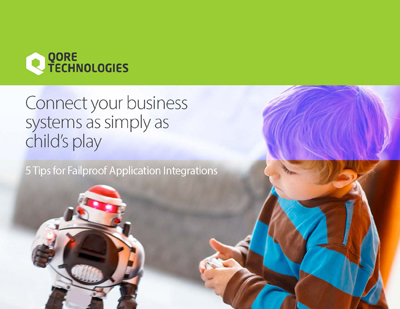Unlocking a Greener Future with IoT Technology
In the modern business world, the fusion of technology and environmental consciousness has led to an unstoppable set of solutions culminating in IoT-driven sustainability. Projections indicate that the IoT professional services market is primed for substantial growth, with an annual surge of 13% over the next five years.These technologies propel industries toward a greener future while driving up process efficiency.
In this post, we’ll explore the challenges in integrating IoT infrastructure with existing enterprise IT systems and how successful integration of these systems drives energy management’s evolution across industries.
Technical Challenges of Integrating IoT and Energy Management IT Systems
Integrating IoT with energy management systems introduces profound technical complexities for many organizations. Here are a few reasons why.
First, there’s data format variability. IoT devices generate a broad spectrum of data formats, spanning structured to unstructured data. Effectively handling data ingestion, transformation, and processing within energy management systems is challenging due to this data diversity.
Protocol heterogeneity is also an issue. IoT devices use many communication protocols like MQTT, CoAP, and HTTP. This precipitates additional layers for protocol conversion and seamless data exchange to accommodate these varying protocols.
Security emerges as another focal point. Meeting security requirements is critical when performing IoT and back-office integrations. Protecting sensitive data requires rigorous encryption and robust access control measures, yet ensuring this level of security across the entire integration pipeline proves technically demanding.
Finally, enterprises often rely on legacy systems, which might lack modern APIs and capabilities for seamless IoT integration. Retrofitting these systems to accommodate IoT data can be technically intricate, involving significant customization and integration efforts. It’s crucial that organizations use integration technologies that employ Transaction-Sure Automation for error detection and self-healing technology that adapts alongside their technology stack.
Now let’s take a look at how seamless integration of back-office IT systems and IoT technologies can power change in the energy management sector.

Smart Agriculture – Cultivating Efficiency
Data Fusion: IoT integration with back-office IT systems enables data consolidation from soil moisture sensors, weather forecasts, and irrigation systems. This amalgamation provides comprehensive insights into soil conditions and weather patterns, facilitating precise decision-making.
Real-time Monitoring: Seamless integration also enables real-time monitoring of soil moisture levels and weather conditions. This continuous data stream empowers farmers to make data-driven decisions on irrigation, ensuring that the right amount of water is applied at the right time.
Data Analytics: Back-office systems equipped with advanced analytics capabilities can process the data generated by IoT devices. This data analysis identifies optimal irrigation strategies, leading to increased agricultural productivity and sustainability.
Redefining Efficiency in Transportation
Telematics Integration: IoT integration within the logistics industry harmonizes data from vehicle telematics systems. These systems monitor vehicle performance, including fuel consumption and emissions, and seamlessly integrate this data into back-office systems for better decision-making.
Traffic Patterns Analysis: IoT devices capture real-time data on traffic patterns and road conditions. When integrated with back-office systems, this data allows for analyzing traffic congestion and optimizing delivery routes.
Route Optimization Algorithms: IoT-driven route optimization algorithms provide real-time route adjustments based on traffic conditions when integrated with logistics systems. This minimizes fuel consumption and reduces emissions, making supply chains more environmentally friendly and cost-efficient.
Intelligent Manufacturing for IoT-Fueled Energy Conservation
Real-time Production Monitoring: IoT integration with manufacturing locations facilitates real-time monitoring of production processes, equipment efficiency, and energy consumption. This data is transmitted to back-office systems, allowing manufacturers to gain insights into energy usage.
Wasteful Practices Identification: Through data analysis, back-office systems can identify wasteful practices in manufacturing. Manufacturers can then optimize production schedules and reduce energy waste, resulting in significant cost savings and reduced carbon emissions.
Retail & Office Transformations Illuminate Eco-Friendly Spaces
IoT-Based Lighting and HVAC Control: Successful IoT integration with lighting systems, HVAC units, and occupancy sensors in retail stores and offices. This integration enables intelligent energy management, such as the automatic dimming of lights in response to natural light levels and adaptive heating or cooling based on occupancy.
Data Aggregation: By aggregating data from various sources, including occupancy sensors and environmental sensors, and integrating with back-office systems, organizations can process this data to create an environment where sustainability aligns seamlessly with operational efficiency.
Cities Get Smarter
Real-time Traffic Monitoring: IoT technology, when integrated with back-office monitoring systems, can enable the real-time monitoring of traffic conditions. Special sensors collect data on traffic density, which is transmitted to back-office systems for analysis. This data informs traffic management strategies to reduce congestion.
Water Level Detection: IoT-driven sensors monitor water levels in bodies of water, reservoirs, and drainage systems. Back-office systems receive this data, ensuring timely responses to potential flooding or water shortages.
Smart Streetlight Control: IoT sensors integrated into streetlights adjust lighting based on ambient conditions and human presence. This enhances energy efficiency by reducing unnecessary lighting, with back-office systems coordinating these adjustments.
Qore Technologies: A Catalyst for Green Progress
IoT technologies are changing every day, but the role of system integration retains its significance in unlocking the technology’s complete potential and reshaping businesses for the better, with use cases like those above and millions that haven’t been dreamed up yet.
For industries where sustainable practices are a global imperative, Qore’s Integration as a Service emerges as a cornerstone of change. By bridging the gap between IoT devices and enterprise systems, Qore empowers businesses to make informed choices that enhance efficiency, cut waste, and reduce environmental impact.
Is your organization ready to be a little “greener”?
Contact Qore Technologies today. We can't wait to hear what you are dreaming up!


